US DOE announces final rule for loan guarantee scheme for advanced energy technology projects - biomass tops list of selected projects
 The U.S. Department of Energy (DOE) announces it has issued the final regulations for the loan guarantee program authorized by Title XVII of the Energy Policy Act of 2005 (EPAct). DOE’s action paves the way for federal support of clean energy projects using innovative technologies and will spur further investment in these advanced energy technologies. The final rule is the culmination of a long public rulemaking process.
The U.S. Department of Energy (DOE) announces it has issued the final regulations for the loan guarantee program authorized by Title XVII of the Energy Policy Act of 2005 (EPAct). DOE’s action paves the way for federal support of clean energy projects using innovative technologies and will spur further investment in these advanced energy technologies. The final rule is the culmination of a long public rulemaking process.DOE's announcements build on months of action to implement its loan guarantee program. In August 2006, DOE issued a solicitation inviting pre–applications for up to $2 billion in loan guarantees. By the December 31, 2006 deadline for this solicitation, DOE received 143 pre–applications requesting more than $27 billion in loan guarantee protection (for project costs estimated at more than $51 billion)
Out of these 143, DOE invited 16 project sponsors who submitted pre-applications last Fall, to submit full applications for the loan guarantees. These projects include advanced technologies involving the uses of biomass (6 projects), fossil energy (3), solar (2), industrial energy efficiency (2), electricity delivery and energy reliability (1), hydrogen (1), and alternative fuel vehicles (1). Projects supported by loan guarantees will help fulfill the goal of reducing America's reliance on imported sources of energy by diversifying its energy mix and increasing energy efficiency.
The following is a summary of the 16 projects and sponsors invited to submit full applications.
Advanced biomass projects:
- Alico, Inc.: Florida is the proposed location for this project, which plans a first-of-a-kind commercial-scale cellulosic ethanol plant that would use multiple feedstocks and produce multiple products.
- Blue Fire Ethanol, Inc.: California is the proposed location for this project, which plans to build a commercial-scale cellulosic ethanol plant using an array of low-cost feedstocks.
- Choren USA: Southeastern, U.S. is the proposed location for this project, which plans to construct an industrial-scale biomass gasification facility for clean synthetic diesel fuels in the United States.
- Endicott Biofuels, LLC: Virginia is the proposed location for this project, which plans to construct a second generation biodiesel and bio-derived products plant that would feature a high level of feedstock flexibility allowing for the production of a broad range of biodiesel fuels.
- Iogen Biorefinery Partners, LLC: Idaho is the proposed location for this project, which plans to build a biorefinery to produce ethanol from a wide range of cellulosic feedstocks and to produce other byproducts of value to several industries.
- Voyager Ethanol, LLC: Iowa is the proposed location for this project, which plans to build a cellulosic ethanol plant that can accommodate multiple feedstocks in the production of ethanol and higher value byproducts.
- Luz II: Nevada is the proposed location for this project, which plans to develop a highly efficient large-scale power project using concentrated solar-thermal technology.
- Solyndra, Inc.: California is the proposed location for this project, which plans to manufacture highly efficient thin-film photovoltaic modules.
 energy :: sustainability :: renewables :: biomass :: bioenergy :: biofuels :: solar :: hydrogen :: efficiency ::
energy :: sustainability :: renewables :: biomass :: bioenergy :: biofuels :: solar :: hydrogen :: efficiency :: Advanced hydrogen project:
- Bridgeport Fuel Cell Park, LLC: Connecticut is the proposed location for this project, which plans to build the largest single-site installation of fuel cells in the world.
- GR Silicate Nano Fibers and Carbonates: Washington is the proposed location for this project, which plans a highly energy efficient process for manufacturing paper.
- Sage Electrochromics: Electrochromic Window Manufacturing Project: Minnesota is the proposed location for this project, which plans to develop a manufacturing facility that would produce energy-efficient windows for the commercial and residential building sectors.
- Beacon Power: Massachusetts is the proposed location for this project, which plans to develop a system that will enhance peak performance of electric generation over the power grid.
- Tesla Motors: New Mexico is the proposed location for this project, which plans to build a battery-electric powered vehicle with enhanced range that can be produced for the consumer market.
- Mesaba Energy Project (MEP-I, LLC): Integrated Gasification Combined Cycle (IGCC) Plant: Minnesota is the proposed location for this project, which plans to build a state-of-the-art IGCC plant that would allot space in its design for CO2 capture and storage. This project would allow for potential CO2 capture in the future, would provide state-of-the-art emission controls far exceeding the emission level requirements specified in Section 1703 of the Energy Policy Act of 2005 and would help reduce cost and increase fuel flexibility of IGCC technology.
- Mississippi Power Company: IGCC Plant: Mississippi is the proposed location for this project, which plans to build an IGCC plant that would commercialize a first-of-its-kind application. This project would allow for potential CO2 capture in the future, would provide state-of-the-art emission controls far exceeding the emission level requirements specified in Section 1703 of the Energy Policy Act of 2005 and would help reduce cost and increase fuel flexibility of IGCC technology.
- TX Energy, LLC: Coal to Synthetic Gas IGCC Plant: Texas is the proposed location for this project, which plans to commercialize a new polygeneration gasification facility that can isolate a significant concentrated stream of CO2 while producing large amounts of power and methanol.
Loan guarantees aim to stimulate investment and commercialization of clean energy technologies to reduce our Nation’s reliance on foreign sources of energy. Finalizing this regulation for the Department’s Loan Guarantee program puts Americans one step closer to being able to use new and novel sources of energy on a mass scale to reduce emissions and allow for vigorous economic growth and increased energy security. - U.S. Energy Secretary Samuel BodmanThe final regulation provides that the Department may issue guarantees for up to 100% of the amount of a loan, subject to the EPAct limitation that DOE may not guarantee a debt instrument for more than 80% of the total cost of an eligible project. Under the final rule, if DOE issues a guarantee for 100% of a debt instrument, the loan must be issued and funded by the Treasury Department’s Federal Financing Bank. While Congress must provide authority in an appropriations act for the loan guarantees that the Department will issue, DOE’s intent is to only issue loan guarantees if borrowers and project sponsors pay the “credit subsidy cost” for any loan guarantee they receive. Therefore, DOE does not plan to use taxpayer funds to pay for the credit subsidy costs of these loan guarantees.
The final regulation also provides for the following:
- The Title XVII loan guarantee program will be implemented through a series of solicitations. The solicitations may target specific technology areas or be general;
- Eligible projects must employ new or significantly improved technologies that avoid, reduce or sequester air pollutants or anthropogenic emissions of greenhouse gases as compared to commercial technologies in service in the United States at the time the loan guarantee agreement is executed;
- The guaranteed portion of a partially guaranteed loan may be separated from or "stripped" from the non-guaranteed portion, except in cases where the guarantee exceeds 90 % of the loan amount;
- In the event of a loan default, DOE will have a superior lien on all project assets pledged as collateral for the guaranteed loan; however, the final rule allows for the possibility in a default situation that lenders and holders of the non-guaranteed debt could share proportionately with the Department in proceeds from the sale of project assets pledged as collateral. A pari passu structure will not be permitted to override the Department’s superior right to project assets;
- The Secretary of Energy must determine that there is a “reasonable prospect” of repayment of the guaranteed debt before a loan guarantee may be issued;
- DOE must charge and collect fees sufficient to cover applicable administrative expenses;
- Borrower–paid Credit Subsidy Costs and administrative fees paid to DOE may not be included within total project costs for the purposes of determining the amount of guarantees that DOE can issue for a project;
- A project’s receipt of other governmental assistance does not disqualify a project from receiving a Title XVII loan guarantee; however, when evaluating a project’s application for a Title XVII loan guarantee, DOE will consider the extent to which a project will receive other governmental assistance, (e.g., grants, tax credits, other loan guarantees);
- The borrower must have a significant equity stake in a project, and proceeds from guaranteed or non-guaranteed debt, and the value of government grants and other assistance, will not be counted as “equity.”
Congress currently is considering the Department’s Fiscal Year (FY) 2008 Budget request for $9 billion in loan guarantee authority and $8.4 million to run the Loan Guarantee office. Both of these actions are important for the successful execution of this program. DOE’s issuance of additional loan guarantee program solicitations is dependent on receiving adequate additional authorization from the Congress and funding for the operation of its Loan Guarantee program office.
DOE's nnouncements build on months of action by DOE to implement its loan guarantee program. In August 2006, DOE issued a solicitation inviting pre–applications for up to $2 billion in loan guarantees. By the December 31, 2006 deadline for this solicitation, DOE received 143 pre–applications requesting more than $27 billion in loan guarantee protection (for project costs estimated at more than $51 billion).
The 16 pre-applicants invited to submit full loan guarantee applications for review must inform DOE by October 30, 2007 if they plan to submit a full application. The applications received will undergo disciplined and rigorous reviews, necessary to take proper account of the potential risks of a project. The full application review will be subject to the final regulations issued today. The decision to issue loan guarantees will depend on the merits and benefits of particular project proposals and their compliance with statutory and regulatory requirements. The pre-applicants not selected to submit full applications from this solicitation can reapply for future solicitations, for which their project is eligible.
Following funding and authorization for the program in February 2007, DOE has established a Credit Review Board to make recommendations to the Secretary of Energy on loan guarantees; named an office director and technical and financial experts to work in the Loan Guarantee program office; and developed guidelines for the financial and technical review of loan guarantee applications.
References:
U.S. Department of Energy: DOE Announces Final Rule for Loan Guarantee Program - October 4, 2007.
U.S. Department of Energy: Final Rule - Loan Guarantees for Projects that Employ Innovative Technologies [*.pdf].
U.S. Department of Energy: Loan Guarantee Program website.
Article continues
 --------------
--------------
 Taiwan's Feng Chia University has succeeded in boosting the production of hydrogen from biomass to 15 liters per hour, one of the world's highest biohydrogen production rates, a researcher at the university said Friday. The research team managed to produce hydrogen and carbon dioxide (which can be captured and stored) from the fermentation of different strains of anaerobes in a sugar cane-based liquefied mixture. The highest yield was obtained by the Clostridium bacterium.
Taiwan's Feng Chia University has succeeded in boosting the production of hydrogen from biomass to 15 liters per hour, one of the world's highest biohydrogen production rates, a researcher at the university said Friday. The research team managed to produce hydrogen and carbon dioxide (which can be captured and stored) from the fermentation of different strains of anaerobes in a sugar cane-based liquefied mixture. The highest yield was obtained by the Clostridium bacterium.


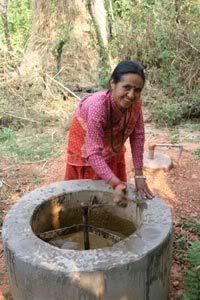 The World Bank has
The World Bank has 
 Some scientists suggest the threat of climate change has become so great, that we must begin to consider 'geo-engineering' the planet to mitigate global warming. Several futuristic proposals are on the table, but many of these have been dismissed as too risky (
Some scientists suggest the threat of climate change has become so great, that we must begin to consider 'geo-engineering' the planet to mitigate global warming. Several futuristic proposals are on the table, but many of these have been dismissed as too risky ( Agriculture is at the centre of the multilateral round of trade negotiations under the World Trade Organization (WTO), the so-called 'Doha Round'. The Global South wants both the United States and the European Union to decrease farm subsidies and abandon tariffs for agricultural products. The developing countries stand united in the G-20, but are confronted with an ongoing dispute between the EU and the US, which holds back progress (
Agriculture is at the centre of the multilateral round of trade negotiations under the World Trade Organization (WTO), the so-called 'Doha Round'. The Global South wants both the United States and the European Union to decrease farm subsidies and abandon tariffs for agricultural products. The developing countries stand united in the G-20, but are confronted with an ongoing dispute between the EU and the US, which holds back progress (
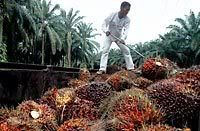 Malaysia-based
Malaysia-based  A new report gives yet another boost to the idea of a Biopact, which consists of wealthy countries in the North importing efficient and sustainable bioenergy and biofuels made in the South, as a way of creating a new trade relationship in which development, poverty alleviation and energy security take center stage. In order for such a pact to succeed, trade reform is needed and subsidy schemes in the EU and the US must be changed.
A new report gives yet another boost to the idea of a Biopact, which consists of wealthy countries in the North importing efficient and sustainable bioenergy and biofuels made in the South, as a way of creating a new trade relationship in which development, poverty alleviation and energy security take center stage. In order for such a pact to succeed, trade reform is needed and subsidy schemes in the EU and the US must be changed. A plant-like micro-organism mostly found in oceans could make the manufacture of products, from iridescent cosmetics, paints and fabrics to credit card holograms, cheaper and greener. The tiny single-celled ‘diatom’, which first evolved hundreds of millions of years ago, has a hard silica shell which is iridescent – in other words, the shell displays vivid colours that change depending on the angle at which it is observed. This effect is caused by a complex network of tiny holes in the shell which interfere with light waves.
A plant-like micro-organism mostly found in oceans could make the manufacture of products, from iridescent cosmetics, paints and fabrics to credit card holograms, cheaper and greener. The tiny single-celled ‘diatom’, which first evolved hundreds of millions of years ago, has a hard silica shell which is iridescent – in other words, the shell displays vivid colours that change depending on the angle at which it is observed. This effect is caused by a complex network of tiny holes in the shell which interfere with light waves. Record oil prices are receiving a lot of media attention, but a quarter of the world's primary energy demand is met by coal. The most climate-destructive fossil fuel is used to generate around 40 percent of all electricity. And like oil, coal too is now experiencing all time highs. Record prices and tight supplies are piling the pressure on electricity generators so much that several industry players
Record oil prices are receiving a lot of media attention, but a quarter of the world's primary energy demand is met by coal. The most climate-destructive fossil fuel is used to generate around 40 percent of all electricity. And like oil, coal too is now experiencing all time highs. Record prices and tight supplies are piling the pressure on electricity generators so much that several industry players  First-generation biofuels like ethanol made from corn and biodiesel from rapeseed have effects on food prices. However, new evidence from the U.S. Department of Agriculture (USDA)
First-generation biofuels like ethanol made from corn and biodiesel from rapeseed have effects on food prices. However, new evidence from the U.S. Department of Agriculture (USDA)  The Hokkaido Forest Research Institute and Hokkaido Forest Products Research Institute conducted joint research from 2003 to 2005 on an F1 hybrid of Dahurian Larch (
The Hokkaido Forest Research Institute and Hokkaido Forest Products Research Institute conducted joint research from 2003 to 2005 on an F1 hybrid of Dahurian Larch ( GE Energy
GE Energy 

 The bioeconomy has the theoretical potential to replace a large amount of fossil fuels. Multiple analyses and projections indicate that global sustainable biomass potentials equate to a maximum of around 1400 Exajoules per year by 2050 (
The bioeconomy has the theoretical potential to replace a large amount of fossil fuels. Multiple analyses and projections indicate that global sustainable biomass potentials equate to a maximum of around 1400 Exajoules per year by 2050 ( Tanzania has registered considerable success in
Tanzania has registered considerable success in 
 A huge mountain of wood chippings from Dorset, in the UK, is
A huge mountain of wood chippings from Dorset, in the UK, is  Energy crop company
Energy crop company 
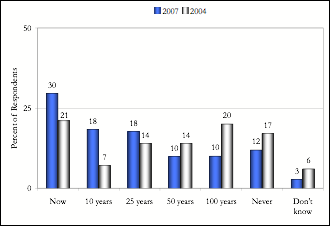




 Caltech Ventures Ghana Limited, a biofuel company in part founded by members of the Ghanese diaspora, will begin the production of ethanol from cassava at Hodzo, near the city of Ho, next year when its $6.5 million production plant would be ready. The company's total investment in the venture is $10 million, managing director Chris Quarshie told African media.
Caltech Ventures Ghana Limited, a biofuel company in part founded by members of the Ghanese diaspora, will begin the production of ethanol from cassava at Hodzo, near the city of Ho, next year when its $6.5 million production plant would be ready. The company's total investment in the venture is $10 million, managing director Chris Quarshie told African media. The
The  The Clinton Global Initiative is launching two biofuel projects aimed at alleviating poverty. The
The Clinton Global Initiative is launching two biofuel projects aimed at alleviating poverty. The 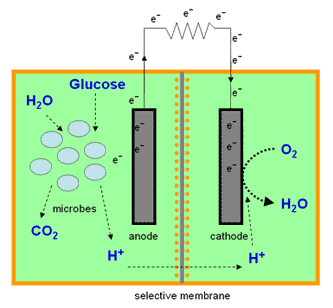
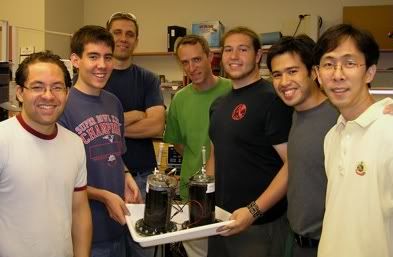









Saturday, October 06, 2007
Biomass pellets revolution in Austria: 46% less costly than heating oil; most efficient way for households to reduce carbon footprint
As part of Austria's Energy Efficiency Day [*German], Austrians enjoy the opportunity to learn about renewables and climate change. One form of energy has taken absolute center stage because it represents a sustainable alternative to fossil fuels, allows large carbon reductions and has become the most competitive of all renewables: biomass pellets. In Austria, the biofuel used for heating is currently a whopping 46 per cent less costly than heating oil and 30% less costly than natural gas - which explains its soaring popularity. Moreover, a recent study comparing strategies with which households can reduce their carbon footprint, shows biomass is the least costly and most efficient way of all.
For the average Austrian household, this makes a very significant difference. The yearly heating bill (24,000 kWh per year) costs around €2000 when heating oil is used. Heating with natural gas will cost a family around €1800 per year. With biomass pellets the bill can be reduced to €1100. Heat obtained from pellets thus costs around 3,8 eurocent/kWh, against 6 eurocent/kWh for gas and 6,7 eurocent/kWh for heating oil.
No wonder last year in Austria three times more biomass systems were installed than heating oil systems. In 2006, some 21,300 small (100kW) pellet heating boilers were built, which have saved the country some 80 million liters of heating oil and 80 million cubic meters of natural gas. In the same year, some 777 medium scale (100-1000kW) systems were installed, a 19% increase compared to 2005.
According to Christian Rakos, director of proPellets Austria, the sector's umbrella organisation, the advantages of biomass pellets are obvious: they are carbon-neutral, can be used in modern boiler systems as a ready alternative for heating oil and gas, and their price is completely independent of fossil fuel prices, which guarantees stability, an important advantage for households.
Strongest weapon against emissions
The Salzburger Institute for Urbanisation and Housing (SIR) released a study for the Energy Efficiency Day which showed biomass pellets offer households the most efficient way of reducing their carbon footprint. By switching from a heating oil system to a pellet heating system, the average Austrian household can avoid up to 10,000 kilograms of CO2 emissions. This is more than the emission reduction potential of all other renewables and efficiency measures.
Using highly efficient insulation materials throughout the home, which would cost on average 4 times more than a biomass heating system, would only offer CO2 savings of around 3300kg.
Geothermal heating systems are an attractive alternative to heating oil, but they too perform weakly compared to biomass. This is due, the SIR says, to their reliance on relatively large amounts of electricity - which, in Austria's electricity mix, is obtained mostly from fossil sources:
Moreover geothermal can only be used for floor and wall heating systems. But most houses in Austria use central heating systems that give off their heat via radiators. Geothermal systems can not deliver the high initial temperatures needed to operate radiators. Finally, geothermal heat pumps have the disadvantage of requiring very costly boreholes.
Other strategies with which households can reduce their carbon footprint include a switch of all lighting systems to efficient lamps. This has a potential for saving only around 100 to 300 kg of CO2 per year.
In short, biomass pellets for heating are unsurpassed in their capacity to reduce household emissions in a cost-effective manner.
Energy security
Biomass pellets were promoted at the Energy Efficiency Day for another reason. The latest study by the International Energy Agency (July) was highlighted, as it offered a grim outlook of both oil and gas price evolutions. Biomass already being much less costly than heating oil, its prospects become even brighter in light of this energy outlook. The study warns for a possible oil and gas crisis, because output in producing countries is growing much less than expected.
Biomass production is fully independent of oil and gas prices. Austria has the capacity to utilize its vast forestry resources in a sustainable manner and can meet increasing demand with ease. Imports of pellets can supply the country at a later time. In this sense, the biomass sector - which relies on fuels that can be traded physically - plays a key role in providing energy security not only to states, but to the average Austrian household.
Translated by Jonas Van Den Berg & Laurens Rademakers for Biopact.
Picture & graph credit: proPellets Austria.
References:
Salzburger Nachrichten: Pellets erweisen sich als sehr kostengünstig und verlässlich - October 6, 2007.
Salzburger Nachrichten: Holzpellets sind aktuell um 46 Prozent günstiger als Heizöl - October 6, 2007.
Salzburger Nachrichten: Tag der Energie-Effizienz - October 6, 2007.
ProPellets Austria, the umbrella of the biomass pellet sector.
Salzburger Institut für Raumordnung & Wohnen - SIR.
Article continues
posted by Biopact team at 6:20 PM 0 comments links to this post
